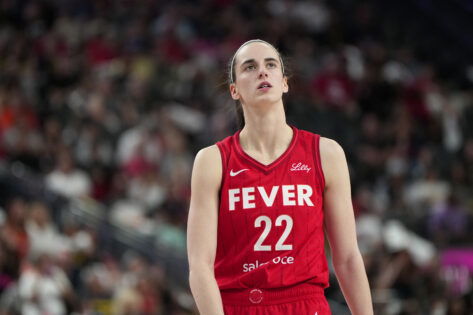The Texas sun was relentless that afternoon at Mike A. Myers Stadium, but so was the tension on the track. Spectators leaned forward in their seats, eyes glued to the lanes. They’d come expecting speed, but no one could predict what was about to unfold. In lane five stood a familiar silhouette. Tate Taylor, the junior phenom from Harlan High School, took his mark. Just beside him, clad in Duncanville red, was his long-time track and field rival: Brayden Williams. Meanwhile, the air sizzled, thick with anticipation. After all, it wasn’t just any 100-meter final. This was the final—the 2025 Texas UIL 6A State Championships. And the crowd knew they were about to witness history.
The gun cracked. Tate exploded from the blocks like a coiled spring. His arms pumped with laser precision, each stride gobbling up the track. But right there—right on his heels—was Brayden Williams, surging with that familiar ferocity. Neck and neck, lane five and six, history raced side by side. Meanwhile, the commentator’s voice cracked with disbelief: “One of the best stars in the game is Brayden Williams, and he is there. Here comes Tate Taylor. They’re neck in neck. There goes Tate Taylor. I told you Tate Taylor is the one who can win it, and I think he does. We gotta see the clock. 1.1 and it is a wind legal 9.92 by Tate Taylor.” The numbers flashed, and it was a state title, a national high school record, and the No. 2 U20 time in the world.
Brayden Williams, for all his grit, crossed just a heartbeat later—10.01 seconds—and eight precious points for Duncanville. But a month earlier, he had shocked the nation with a wind-aided 9.82, proving he, too, was among the elite. That race had set the tone for May 3. So, this was personal. This was a legacy.
Later, under the stadium lights, Tate stood for interviews, breath still catching from his electrifying run. When asked about Brayden, the fire returned to his eyes—not the kind born from animosity, but from mutual respect forged in years of tight finishes. “Me and Brayden have a rivalry going back from like two years ago where we always go head-to-head in that straightaway, man,” he said. “The indoor in the 60, outdoor in the 200, it’s always a good rivalry. So I know anytime I race Brayden, I’m gonna have a good race. And he’s gonna put together a good race as well.” But Tate’s dominance didn’t end with the 100m.
Just hours later, the track and field athlete scorched the curve and came charging home in the 200m final, putting up another historic mark. That performance secured him the No. 3 spot in the all-time high school rankings. Yet, Tate’s words were humble for all the records and accolades: “Ultimately speaking, I just wanna have fun, man. Thank God I was here for the opportunity. Thank God he brought everybody else here for the opportunity and very blessed. All glory to him, man.” That day, Tate Taylor didn’t just run. He arrived—and so did the rivalry that’s shaping high school sprinting’s future. Because while 9.92 seconds etched his name in the record books, the chase with Brayden Williams is writing the story. And the story has some more chapters.
The teenage track and field athlete is making his place
To truly grasp what Tate Taylor did on May 3 in Austin, you have to look beyond the finish line, beyond the gold medal draped around his neck, beyond even the national record he just shattered. Because 9.92 seconds isn’t just fast. It’s generational.
At the World Athletics U20 level — which includes every teenage sprinter on Earth — only one name stands above Tate on the all-time list: Letsile Tebogo. The Botswanan phenom made global headlines when he clocked 9.91 in 2022, a run that many called the “Usain Bolt moment” of his generation. Now, just one-hundredth of a second behind, Tate Taylor has joined that rarified air. And get this — he’s still a junior in high school.
Moreover, his 9.92 makes him the No. 2 U20 sprinter in track and field history. Not just in the U.S., not just among high schoolers — in history. That time leapfrog names you’ve probably watched on Olympic stages. Examples? Noah Lyles, Erriyon Knighton, and Trayvon Bromell. So, in other words, Tate Taylor is doing things no American teen sprinter has ever done — and doing them clean, smooth, and wind legal. The 9.92 wasn’t a fluke. It was a signal. A shift. A new standard for what’s possible. And perhaps most importantly, it’s just the beginning.
The post 17-Year-Old Track & Field Prodigy Taylor Tate Gets Candid on How a Rivalry Fueled His Rise to Fastest High Schooler in History appeared first on EssentiallySports.



